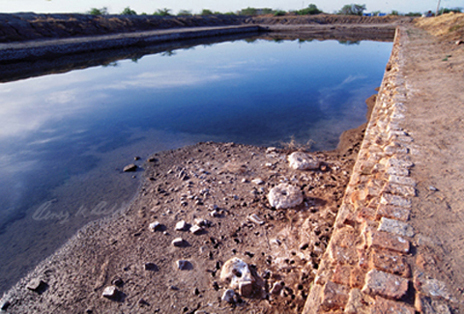Benoy K Behl
One of the important sites of the Indus Valley Civilization is at Lothal in present-day Gujarat, on the western coast of India. Here, a large structure has been identified as a tidal dock for sea-faring ships (a remarkable feat for its time). There is a great deal of evidence that the Indus Valley cities had extensive trade with other civilisations of that period. Mesopotamian records mention their trade with cities here and objects from the Indus region have been found in West Asian cities as well.
The writing of this period has not been deciphered as yet, so many of our questions about this culture remain unanswered. It is the art of the Indus Valley Civilisation which provides vital clues to understanding it. As with any culture, this art provides a glimpse of the political, social and philosophical ethos that underlies it.
The photograph shows ancient dock for ships at Lothal in Gujarat. The Indus Valley period site of Lothal, in present-day Gujarat, has a large structure which is identified as a constant-water-level dock. This represents a very advanced engineering feat.
The artifacts that have been excavated from the Indus Valley culture are unique in their small scale. No monumental sculpture has been found at the sites. All the art objects, whether in terracotta, stone or metal can be described as being on an intimate scale. This is surely related to the fact that no palaces or other monumental architecture has been excavated either. All archaeological evidence indicates the existence of a cooperative system and not a conventional kingship. Monumental structures and art which display royal authority only follow much later in the Indian subcontinent.
What a remarkable civilisation we are talking about! There is highly developed town-planning and technology, sea-fairing ships, a dock an evidence of trade with far away lands, yet no evidence at all of any army or police. What is more, we find no evidence of royal grandeur or kingly rule. All archeological evidence points to a cooperative society. Best of all, there is no evidence of grand and monumental art. All art that we find is on a small and personalized scale. Here we see the roots of a great tradition of art which evolved and continued till the middle of the First Millennium CE.
